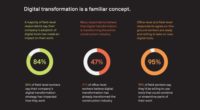Breaking precedent from its 10-year model-contract-update cycle to keep up with fast-changing practices regarding "e-building," the American Institute of Architects released revised standard digital-data and building-information-modeling documents for use by all members of a project team. Designers attending the 2013 AIA National Convention and Design Exposition in Denver, on June 20 to 22, acknowledged that the AIA documents and the new guide released with them represent progress. But they still expressed concerns about sharing BIMs with contractors.
“We all know this is the future, and [developing standard BIM documents] is tough to tackle,” said an architect attending a session introducing the documents. “But until we reach a point where we can seal a model, we are expanding our risk and creating potential conflict and liability issues relating to the instruments of service.”
No Case Law
There is no real case law yet on the designers' standard of care related to BIM. “It’s the wild, wild West,” said Jim Bedrick, principal of A/E/C Process Engineering, San Francisco, and chairman of the digital-practice-documents task force within the AIA documents committee. “There are not a lot of rules, but people are talking.”
The AIA sees the digital practice documents as a way for the standard of care to be established by the design professions, rather than by the courts as a result of claims.
Michael B. Bomba, an associate counsel on the Washington, D.C.-based AIA contract documents team, said, “Architects have an obligation to maintain responsible control over their design. You can’t change that obligation in any kind of agreement.”
And Ken Cobleigh, managing director and counsel for the AIA contract-documents team, explained that nothing in the documents suggests the contractor is allowed to change the design. Designated model uses are specific, for example, for estimating and to influence shop drawings, he said. "The documents do not change the responsibilities of who provides design services and who provides the means and methods of construction," he added.
The document-revision effort started in 2010. For the first time, the AIA released a draft of the digital practice documents for public review. AIA wanted as broad a base as possible to double check the input from the committee's liaisons—some 25 to 30 groups or individuals—that had reviewed the draft. “This is a fairly narrow topic, and we knew if we invited the entire industry to comment, we had a high level of confidence we could manage the data feedback,” said Cobleigh.
Also before releasing the documents, AIA gave HDR Architecture Inc. a license to use the documents for a 575,000-sq-ft, multiple-facility health-care project.
The AIA published its first digital-data documents, AIA Documents E201–2007, Digital Data Protocol Exhibit, and C106–2007, Digital Data Licensing Agreement, in October 2007. E201–2007 is an exhibit to an agreement that allows the parties to establish the procedures they agree to follow with respect to the transmission or exchange of digital data, including instruments of service.
C106–2007 is a stand‐alone agreement between two parties that otherwise have no existing licensing agreement for the use and transmission of digital data, including instruments of service. In 2008, the AIA published AIA Document E202–2008, Building Information Protocol Exhibit, which is attached to the parties’ agreement.
E202–2008 is used to establish the requirements for model content at five progressive levels of development and the authorized uses of the model content at each level of development. The document also assigns authorship of each model element by project phase, defines the extent to which model users may rely on model content, clarifies model ownership, sets forth BIM standards and file formats, and provides the scope of responsibility for model management from the beginning to the end of the project.
The new set includes AIA Document E203–2013, Building Information Modeling and Digital Data Exhibit; AIA Document G201–2013, Project Digital Data Protocol Form; and AIA Document G202–2013, Project Building Information Modeling Protocol Form. E203–2013, G201–2013 and G202–2013 are substitutes for and replace E201 and E202, says the "Guide, Instructions and Commentary to the 2013 AIA Digital Practice Documents," issued with the new set of documents to aid in their use.



Post a comment to this article
Report Abusive Comment